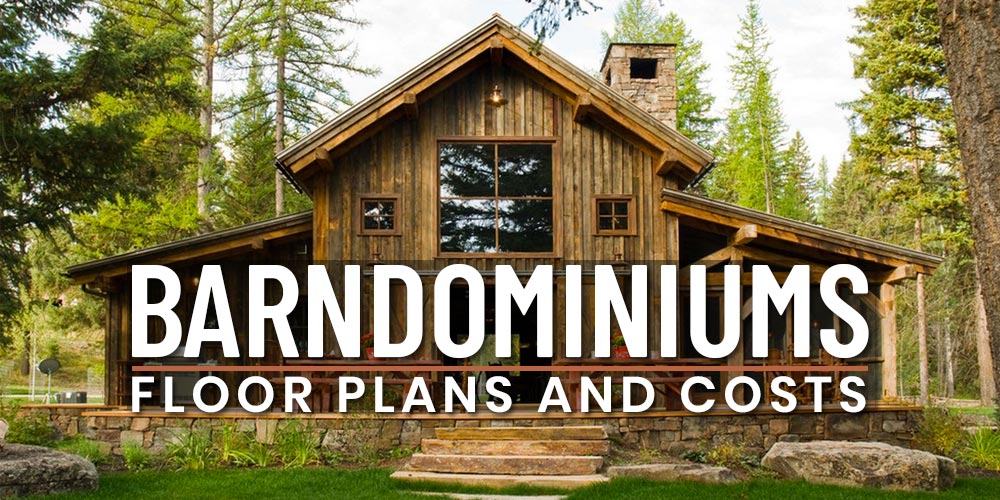Barndominiums Vs. Conventional Homes: a Comprehensive Comparison of Way Of Living and Performance
The decision between barndominiums and typical homes incorporates various elements, consisting of lifestyle preferences and useful requirements. Barndominiums are identified by their open designs and versatility, typically attracting those that focus on communal living and versatility. On the other hand, conventional homes use a more organized setting, which may much better offer family members looking for privacy and a sense of background. As we check out the expense effects and environmental factors to consider, it comes to be clear that the option extends beyond plain visual appeals and capability; it welcomes a deeper expedition of what truly defines a home.
Review of Barndominiums
Barndominiums, a novel real estate pattern gaining popularity throughout numerous areas, blend the rustic beauty of barn-style design with the performance of modern home. These unique frameworks normally include a metal or wood structure, combining open layout and high ceilings with energy-efficient features. Usually positioned on expansive rural residential or commercial properties, barndominiums use house owners the opportunity to take pleasure in a calm lifestyle while supplying enough area for different tasks.
The convenience of barndominiums expands past their aesthetic allure; they can work as both living quarters and useful spaces for leisure activities, workshops, or perhaps local business. Their flexible layout permits very easy customization, fitting varied family demands and choices. Numerous proprietors appreciate the low maintenance demands associated with steel exterior siding and roofing, adding to lasting toughness.

Attributes of Typical Homes
Highlighting ageless design and comfort, traditional homes are defined by their unique building designs, which usually mirror historical influences and local aesthetic appeals. Common functions consist of balanced facades, gabled roof coverings, and a focus on craftsmanship, causing a cozy and welcoming environment.
Typical homes often integrate elements such as crown molding, wainscoting, and wood floor covering, enhancing their classic charm. They commonly feature numerous areas with defined functions, promoting household communication while permitting for privacy. website. The layout typically consists of official living and dining locations, which are favorable to amusing guests and organizing household events
Outside materials such as brick, wood, or rock are regularly made use of, adding to durability and a sense of durability. Barndominium builder. Furthermore, lots of conventional homes are made with front decks or stoops, promoting a sense of area and link with the community
Landscape design plays a considerable role in conventional home design, with properly maintained gardens and pathways that enhance curb appeal - visit site. On the whole, typical homes personify a sense of fond memories and stability, appealing to those who value heritage and a much more organized living setting
Cost Contrast
Normally, a cost contrast between barndominiums and standard homes reveals substantial distinctions in building and construction costs and general investment. Barndominiums, often built from steel or steel frameworks, normally incur reduced material and labor expenses than typical homes developed from timber and block. The streamlined design of barndominiums can equate to reduced construction times, additionally reducing labor prices and expediting tenancy.
Typically, the cost per square foot for a barndominium ranges from $100 to $150, while typical homes can vary extensively, typically falling in between $150 and $300 per square foot, depending on location, materials, and design intricacy. This cost disparity makes barndominiums an appealing option for budget-conscious buyers seeking bigger home without compromising quality.
Furthermore, barndominiums might lead to lasting financial savings via lower upkeep expenses, power effectiveness, and my explanation insurance policy rates. Their long lasting construction materials often need much less upkeep in time contrasted to typical homes. It is crucial to think about that while initial prices may be lower for barndominiums, the last investment will certainly additionally depend on private personalization and wanted amenities, which can influence the general expenditure in both housing types.
Way Of Living and Room Considerations
When taking into consideration lifestyle and room, barndominiums offer a special flexibility that charms to a range of house owners. These hybrid frameworks incorporate household coping with practical space, usually including open layout that can be adapted to fit specific demands. This adaptability is specifically advantageous for households or people looking for a customized living atmosphere, permitting diverse uses such as home workplaces, workshops, or recreational locations.

Furthermore, the visual allure of barndominiums can deal with both rustic and contemporary tastes, making them a versatile selection for different design preferences (Barndominium repair). Inevitably, the choice between a barndominium and a standard home often pivots on exactly how well each option straightens with the homeowner's way of life aspirations and spatial demands, highlighting the importance of thinking about individual top priorities in the decision-making procedure
Environmental Effect and Sustainability
The environmental influence and sustainability of barndominiums existing compelling benefits compared to standard homes. Primarily built from steel and other resilient materials, barndominiums are often built using recycled sources, minimizing the demand for brand-new materials and reducing waste. Their design typically highlights open areas, which can lead to lower power usage for heating & cooling compared to typical homes with more segmented designs.
In addition, barndominiums can include sustainable attributes such as solar panels, rainwater harvesting systems, and advanced insulation strategies, boosting their energy effectiveness. The versatility of their style allows homeowners to integrate these modern technologies more effortlessly than in many traditional homes, which might require extensive retrofitting.
Additionally, barndominiums usually need less sources for building as a result of their easier, more effective styles. This not only decreases the carbon footprint related to building however additionally contributes to a more lasting way of life. In comparison, standard homes might involve higher levels of power expenditure and source use throughout their lifecycle, from building to upkeep. In general, barndominiums represent a forward-thinking approach to sustainable living, straightening with modern environmental concerns.
Conclusion
In summary, the selection in between barndominiums and standard homes pivots on specific way of life choices and functional requirements. Barndominiums, with their open designs and sustainable materials, provide to those looking for adaptability and common living.